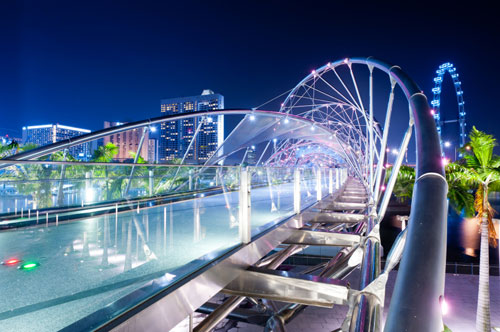By James Dacey

The Helix Bridge in Singapore. (Courtesy: iStockphoto/TommL)
Despite its modest size, the city-state of Singapore is clearly an ambitious nation, boasting a leading financial centre and one of the world’s busiest ports. During a recent visit to Boston I met a man called Lim Tze Min who works for a government agency called Contact Singapore, which exists to try and attract skilled people to live and work in Singapore. I wanted to know why a physicist might consider relocating to the country. Listen to our conversation here.
Tze Min talks about research facilities including the Centre for Quantum Technologies (CQT), the founding director of which is the Polish-born physicist Artur Ekert, who is also affiliated with the University of Oxford in the UK. According to Tze Min, one of the major bonuses of being a researcher in Singapore is the small amount of bureaucracy invovled, which allows scientists to get on with just doing the science. Give it a listen and decide for yourself whether it sounds like a place where you could imagine yourself working.
Guidelines
Show/hide formatting guidelines
this text was deletedwhere people live in harmony with nature and animals</q>
Some text